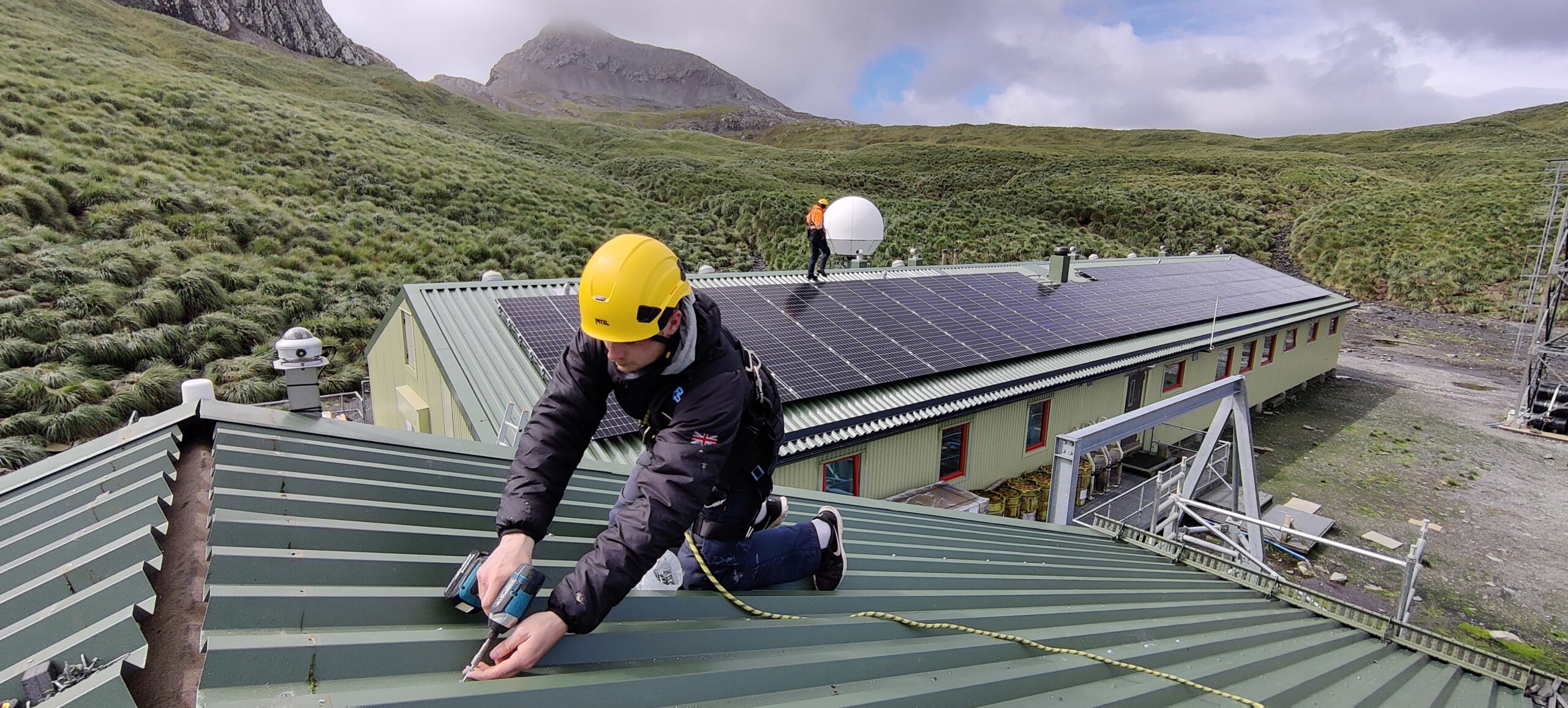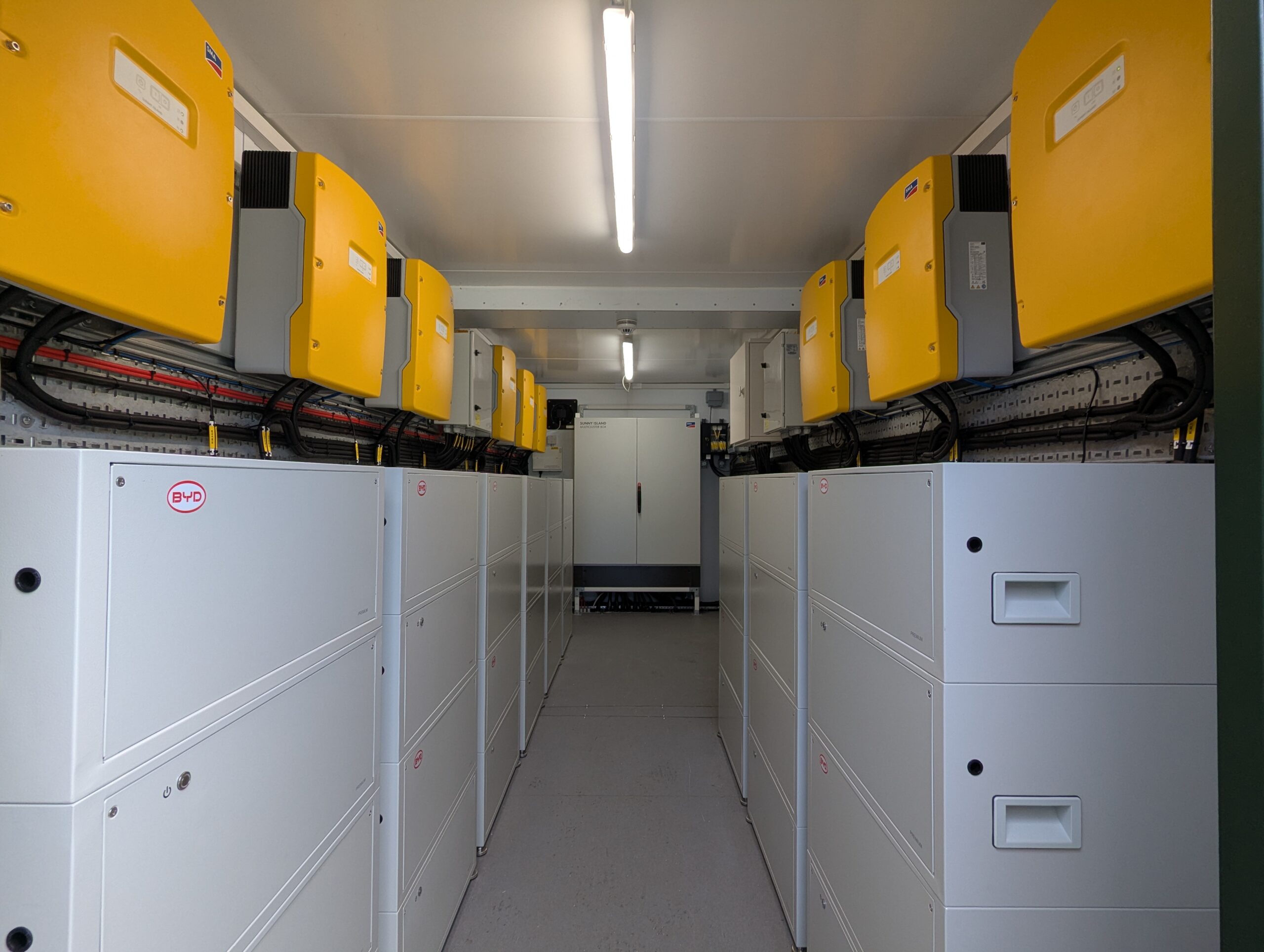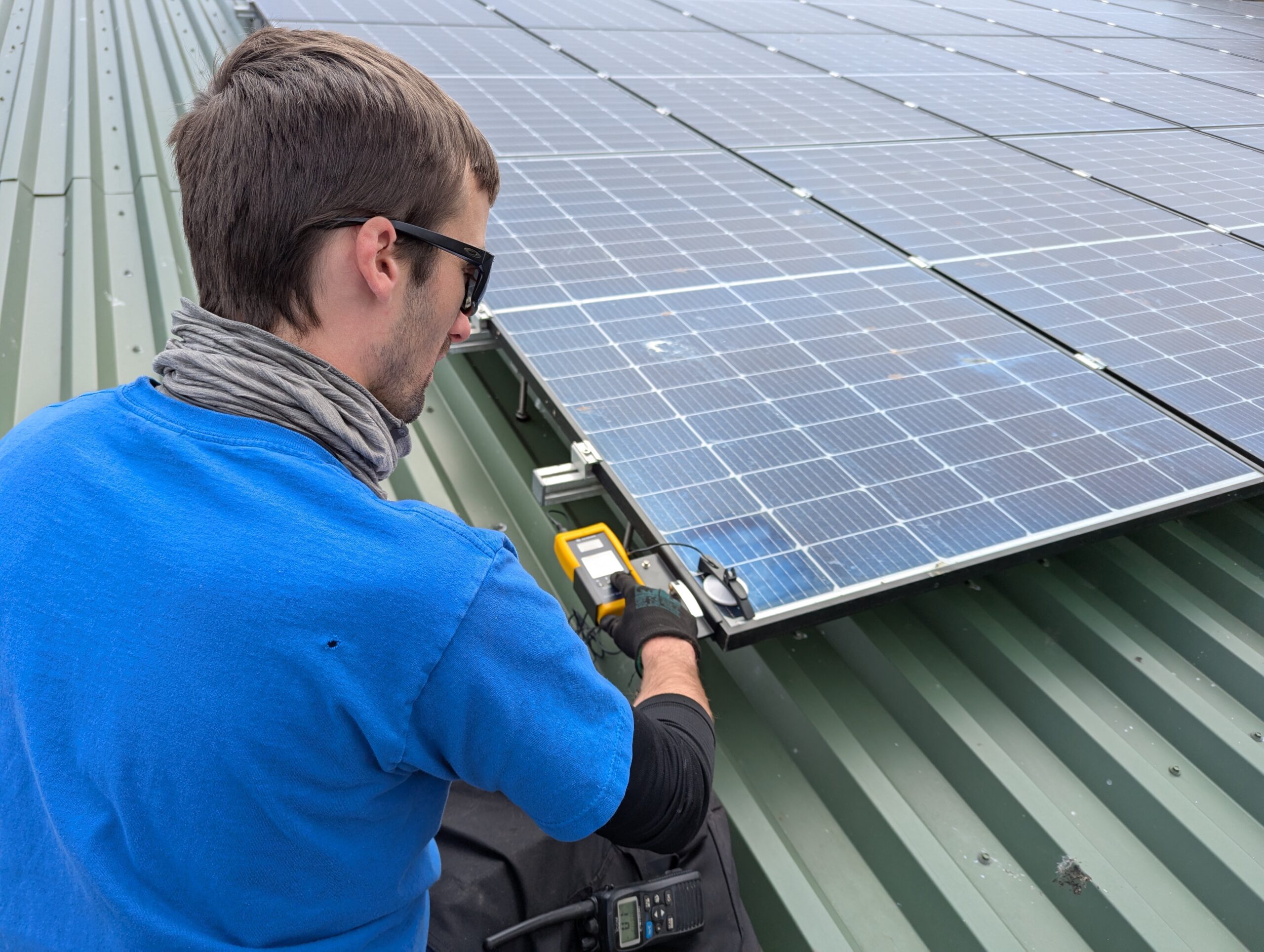Bird Island Decarbonisation
Bird Island Research Station Decarbonisation
To decarbonise our remote Bird Island Research Station on the sub-Antarctic Island of South Georgia we have installed a solar Photovoltaic and Energy Storage System.
- This will enable us to reduce Bird Island’s carbon emissions by 50% and contribute to our net zero targets. Previous decarbonisation efforts have led to the installation of a solar thermal system that reduces the fuel use for hot water generation.
- As part of the project 268 solar panels of 99.16kWp were installed covering all existing roofs of the station. This is complemented by an energy storage system of lithium iron batteries of 277kWh nominal capacity.

 Dave Blaylock, BAS
Dave Blaylock, BASThe £500,000 renewable energy project funded by the Natural Environmental Research Council (NERC) was installed on Bird Island over three Antarctic summer seasons and activated on 14 January 2025.
- During the Antarctic summer the system is capable of providing most of the power that the station needs reducing the need to use the generators.
- Excess solar power is stored in the batteries, which take over running the station during the dark hours.

 Dave Blaylock, BAS
Dave Blaylock, BASBenefits of the project
- Reducing fuel use and carbon emissions on station by 50% annually, with carbon savings of at least 50 tCO2e
- Avoiding shipping time for refuelling with wider indirect carbon savings
- Reducing environmental risks, such as fuel spills
- Increasing the station’s energy security and resilience
- Reducing operational and maintenance costs
Background to the project
The British Antarctic Survey (BAS) organised an Innovation Exchange event in November 2020 in partnership with the Knowledge Transfer Network (KTN). The aim was to ask small businesses to submit proposals including opportunities and technologies to decarbonise Bird Island Research Station.
Different types of renewable energy were considered for the site and were discounted for various reasons. For example, although wind could provide a significant portion of the station’s energy, there are concerns about its potential impact on wildlife. Marine based renewables were also decided against due to the potential of sea ice build-up and the significant infrastructure it would require. Ultimately solar was selected as the best option for the project.
Following the pitches delivered through the KTN, one of the winning teams, Danecca, completed a feasibility study on the optimisation of the planned energy system for Bird Island; the proposed system of solar PVs, energy storage and smart controls aimed at maximising efficiency and achieving significant fuel savings by managing supply and demand of energy sources and ensuring optimal fuel efficiency for the generators.
Further feasibility work was completed by a team of students from Cardiff University which completed a project identifying technologies to aid in the decarbonisation of energy generation at Bird Island. This project won the Inspired Engineers Award 2021, celebrating students whose projects help solve a real-world problem. The feasibility studies allowed BAS to estimate the generation potential of solar panels and overall carbon saving of a solar and energy storage system at Bird Island. Following this, the BAS polar estates team developed a complex detailed design and delivered the project with great success.
Project delivery
The Bird Island Solar PV project started in 2021/22. Due to a highly corrosive environment, with high wind speeds and high snow load in winter, the polar estates team had to develop a more robust design than a standard solar array. The first season (22/23) involved buying parts and shipping them to Bird Island station. These included photovoltaic panels, fixings and the construction of a battery storage building. This was a particular challenge as the remoteness of the station limited the use of vehicles.

 Dave Blaylock, BAS
Dave Blaylock, BASThe team made a great start on installing the panels on the station roofs. The season included placement of battery storage containers and strengthening of the building structure, ready for PV installation with some progress on PV installation.
In the second and third seasons (23/24), the team focused on strengthening the roofs and completing the installation of the PV panels. They also completed the majority of the wiring.
With limited available bed space at Bird Island that allowed only a small team delivering the project, it was completed on schedule with great success.
Future Plans
As part of our net zero efforts, the team is identifying additional ways to reduce energy demand and improve energy efficiency on station. In addition, upgrading and integrating the domestic hot water system to the solar-battery capability is expected to maximise the use of solar generation and reduce further fuel use and carbon emissions associated with heating and hot water services.